Considering History: The Fundamental Radicalism of the American Labor Movement
This series by American studies professor Ben Railton explores the connections between America’s past and present.
Last week, nearly 50,000 members of the United Auto Workers union went on strike at General Motors factories across the country, one of the largest national strikes in decades and part of a larger trend toward significant labor actions. And in a few weeks, Netflix will premiere director Martin Scorsese’s much-awaited new film The Irishman, which stars legendary actors Robert De Niro and Al Pacino in a historical drama depicting controversial labor leader Jimmy Hoffa and his ties to organized crime in mid-20th century America. These events are bringing renewed attention to different sides of the American labor movement.
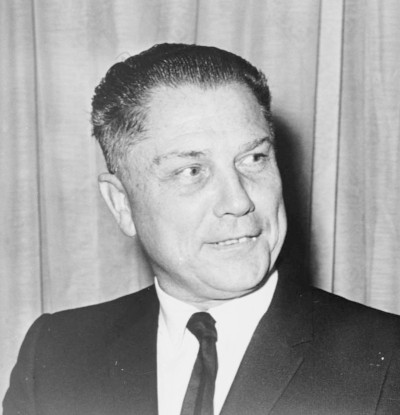
While Hoffa was only one figure, and his historical legacy has perhaps been overstated due to his still-mysterious disappearance, Scorsese’s film reminds us of a central element to the 20th century labor movement: its status as a racket. It’s impossible to tell the story of American labor over the last 100 years without engaging that side of the story, not just through overt aspects like the relationship to and role of organized crime but also through labor leaders and organizations that have themselves operated much like mob bosses.
Yet like Hoffa’s larger-than-life legacy, those aspects of the labor movement can be given too prominent a place in our collective memories — and in so doing, we risk forgetting the truly radical origins of the labor movement in America, legacies that importantly contextualize today’s national strikes.
The 1877 railroad strikes, which are generally seen as the first such national such labor actions, exemplify those radical origins. Strikes had been part of American society since its first European settlements, with Polish craftsmen in the Jamestown colony striking for fair treatment and civic rights in 1619. As early as 1648, Boston coopers and shoemakers both formed workers’ guilds to advocate for workplace standards and practices. But for the next two centuries, both labor organizations and labor actions would remain largely at the local level, achieving advances in their particular communities but not uniting larger cohorts of American workers in service of shared, societal goals.
The 1877 strikes would bring labor organizing and activism to the national stage. They began on July 14 in Martinsburg, West Virginia, where the Baltimore & Ohio (B&O) Railroad had cut its workers’ wages for the third time in a year. In response, striking workers stopped all train service in the city. Governor Henry Mathews sent in the state militia to end the strike, but the soldiers would not fire on the strikers and the labor action continued. It soon spread to other mid-Atlantic states, with the first follow-up strikes in the Maryland cities of Cumberland and Baltimore, as well as a more violent clashes between the militia and strikers in that latter city. By the end of July strikes and violence had reached Albany, Pittsburgh, Scranton, Chicago, and East St. Louis, among other cities.
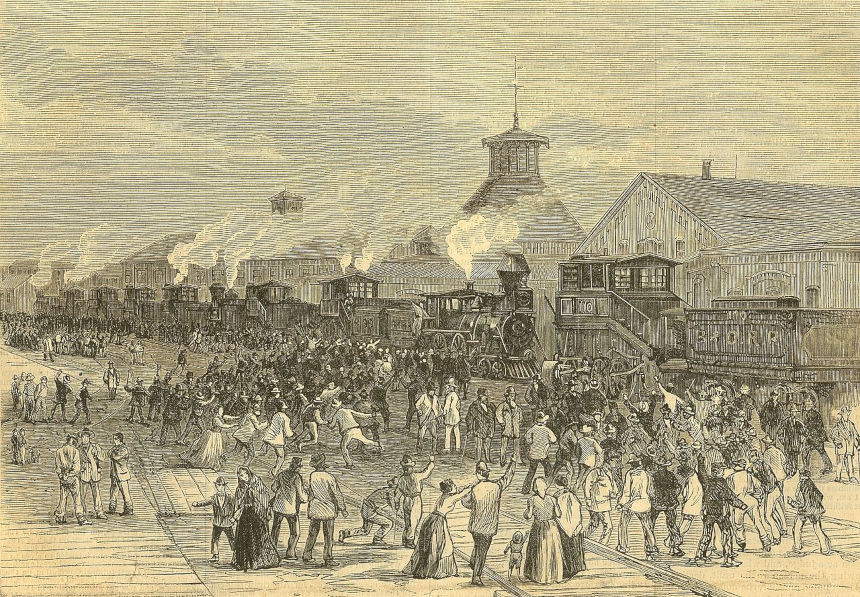
The combination of widespread, sustained labor actions and extreme, violent responses led these 1877 events to be known collectively as the Great Upheaval, and both elements reflected the moment’s profound radicalism. The strikers wanted to achieve their immediate goals (such as wage guarantees and increases), but also advocate for broader, systemic changes that would affect workers across the nation and in every industry. That is, even while they fought for their lives and rights, the 1877 strikers, organizers, and labor leaders also advocated for issues like child labor laws, health and safety regulations, and the 8-hour workday.
The consistent use of troops and violence to respond to the strikes likewise reflects the moment’s truly revolutionary nature. Like Governor Mathews in West Virginia, the authorities in each affected city and state called out not just police but also state and volunteer militias (as well as private armies like the infamous Pinkerton detectives); and unlike in Martinsburg, in far too many cases those units did not hesitate to use lethal force. When those local and state forces were unable to stop the strikes, President Rutherford B. Hayes went one step further, sending federal soldiers to each city in order to suppress both the violence and (especially) the labor actions themselves. These nationwide clashes between American soldiers and rebels could be accurately described as a brief but brutal period of revolution or civil war that reflected the moment’s profoundly radical nature and effects on American society.
Beyond those violent repercussions, the effects of the 1877 general strike were both immediate and long-lasting. On May 1, 1880, the B&O Railroad company established the Baltimore and Ohio Employees’ Relief Association, a groundbreaking example of worker insurance and protection; four years later, the company offered one of the first corporate pension plans in American history. On a broader scale, the national labor movement grew exponentially in the years following the strikes: the Knights of Labor, the first truly national union, grew from a few thousand members in the 1870s to 28,000 in 1880 and roughly 700,000 by 1886 (with many members also separating to form the American Federation of Labor); and the 1880s as a whole would witness more than 10,000 strikes and labor actions, as this form of radical activism became a commonplace part of American society.
Yet to my mind, despite such prominent effects neither general strikes nor violent clashes reflect the labor movement’s most radical elements. Instead, I would emphasize the ways that movement represented a diverse coalition of American workers. Too often, the movement relied upon hierarchies or discriminations, such as the late 19th century American Federation of Labor (AFL)’s use of the category of “skilled labor” to consistently exclude immigrants and African Americans.
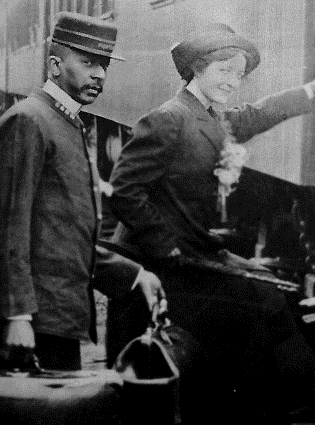
Instead, labor leaders of color helped actively resist discrimination and model an inclusive labor movement. A vital case in point is the Brotherhood of Sleeping Car Porters (BSCP), the first labor organization led by African Americans to receive an AFL charter. African-American Pullman porters had comprised the vast majority of that workforce since the railroad company’s late 19th century origins, and Pullman remained one of the nation’s largest employers of African Americans into the 1920s. Porters had tried unsuccessfully to organize for years, but in August 1925 a group of more than 500 met in Harlem, formed the BSCP under the slogan “Fight or Be Slaves,” and chose New York labor organizer A. Philip Randolph (previously co-founder and president of the short-lived African-American union the National Brotherhood of Workers in America) as their first president.
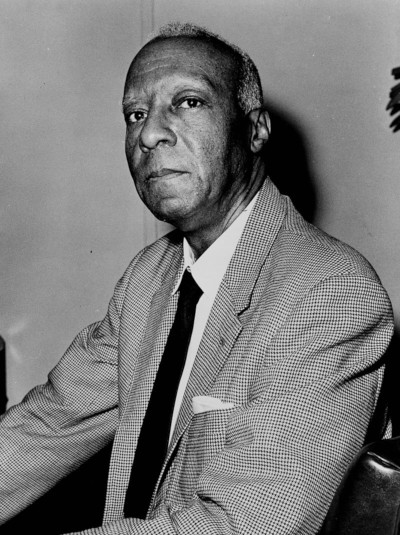
Powerful figures like Randolph and his BSCP co-founder (and first vice president) Milton Price Webster, a Chicago political leader in the era’s “black Republican machine” as well as a lifelong labor activist, represent a key contrast to more corrupt labor leaders like Jimmy Hoffa. Randolph and Webster certainly ruled the BSCP throughout its early years, quickly turning it into a national powerhouse that by 1929 received affiliated status from the AFL. But they did so in order to advocate for the under-represented workers and gain them a voice. Their efforts produced inspiring legacies: in labor activism, as illustrated by Pullman’s ground-breaking August 1937 contract with the BSCP; and in civil rights, as Randolph in particular would become a leading voice in the nascent Civil Rights Movement, as exemplified by his June 1942 Madison Square Garden address to an audience of nearly 20,000 African Americans, a speech that launched the era’s March on Washington Movement.
From the 1877 general strikes to that 1940s activism, and up through today’s UAW actions, time and again the labor movement has represented a radical force in American society, politics, and culture. While we can’t ignore the darker sides to the movement, whether its discrimination or its links to organized crime, neither can we afford to minimize that fundamentally radical legacy. Not if we want to understand our histories, and not if we want to move forward into the kind of fair and equal society that the labor movement can help us create.
Featured image: The Sixth Maryland Regiment confronts striking workers in Baltimore (photo by D. Bendann, Harper’s Weekly, August 11, 1877, Library of Congress)
Considering History: Voices and Stories of the Mexican-American Experience
This series by American studies professor Ben Railton explores the connections between America’s past and present.
In the prior two posts in this series on Myths and Realities of the Mexican-American Border and Mexican Americans as Political Prop in the 20th and 21st Centuries, I’ve traced the Mexican-American border’s constructed and contested nature, the border patrol’s origins and initial role in the Chinese Exclusion era, and the use of Mexican Americans as a political prop throughout the 20th century. These histories form a vital backdrop for any conversations about the border and immigration, and as a result need to be more fully understood in our heated contemporary moment.
Yet one element is largely missing from those posts: the voices and stories of Mexican Americans themselves. In each historical period, we find compelling stories that certainly highlight the effects of our most exclusionary national policies but that also exemplify how Mexican Americans have fought for their own and their community’s rights within an evolving America.
María Amparo Ruiz de Burton Depicts the Mexican-American Experience
The first Mexican-American author to publish fiction in English, María Amparo Ruiz de Burton, experienced first-hand and wrote about the late 19th century aftermath of the Mexican-American War and the Treaty of Guadalupe Hidalgo. The daughter and granddaughter of Mexican generals and political leaders, after the Treaty a teenage Ruiz moved north to Alta California with her family. She met and married an American military officer, and they began operating a ranch just outside of California. But he was injured during the Civil War and died shortly thereafter, and when Ruiz de Burton returned to California with her two children she found that Anglo squatters had occupied the ranch (a far too common experience for Mexican-American landowners in the era).
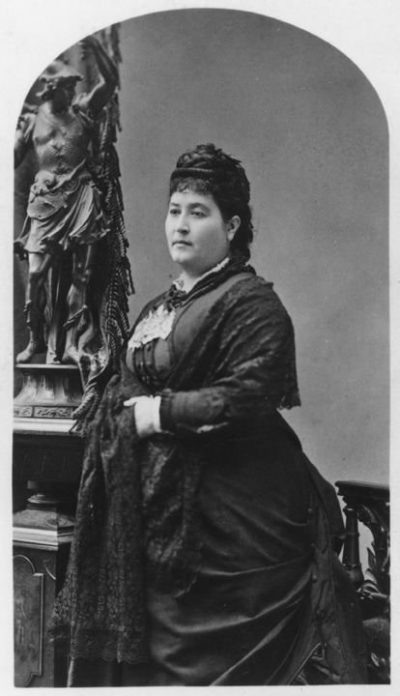
For the remainder of her life Ruiz de Burton fought legal and political battles to regain and secure her ranch and land claims. At the same time, she published a number of literary works, including two compelling novels: Who Would Have Thought It? (1872), which uses the story of an adopted mixed-race girl to satirize Anglo-American ideals and prejudices; and The Squatter and the Don (1885), which highlights the experiences of both Anglo arrivals and Mexican landowners in post-Treaty California. While these novels do not shy away from the harshest realities of late 19th century Mexican American life, Ruiz de Burton also portrays an American future that includes (and in Squatter romantically unites) all these cultures and communities.
Stories from the Mexican Repatriation Program
The Mexican Repatriation program of the 1930s represented one of the first national policies that sought instead to exclude Mexican Americans from that shared future. Francisco Balderrama and Raymond Rodríguez’s Decade of Betrayal: Mexican Repatriation in the 1930s (1995) features the stories of many of the millions of Mexican Americans (a majority of them birthright citizens) affected by this exclusionary policy. In one telling moment in the book, Southern California radio host José David Orozco and his guest Dr. José Díaz share stories of married couples and families separated by the region’s deportation sweeps. And the policy’s effects were felt nationwide, as illustrated by a groundbreaking 1973 study of the near-complete destruction of the Mexican-American community in Gary, Indiana (where many had been employed by U.S. Steel).
The Successes of the League of United Latin American Citizens
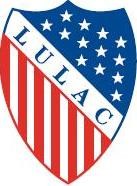 Many Mexican Americans fought back against the era’s discriminations. Founded in February 1929 in Corpus Christi, Texas, the League of United Latin American Citizens (LULAC) was modeled in part on the National Association for the Advanced of Colored People (NAACP). Two founding members, Pedro and María Hernández, were particularly instrumental in developing LULAC’s multilayered social and political agenda: María, an elementary school teacher and mother of ten, focused on educational outreach and support for expectant and new mothers; Pedro, a political and legal activist, organized a successful lawsuit challenging the Texas legislature’s longstanding policy of excluding Mexican Americans from juries. Over the next decades LULAC would extend those efforts: creating community education and preschool programs (such as the popular Little School of the 400 program); conducting voter registration campaigns and opposing efforts to disenfranchise Hispanic voters; suing school districts that denied Mexican-American students equal access and opportunities; and advocating for both basic rights and full citizenship for Mexican and Hispanic Americans. Two of their successful educational lawsuits, Mendez v. Westminster (1945) and Minerva Delgado v. Bastrop Independent School District (1948), helped create the precedents that would lead to the Supreme Court’s turning point anti-segregation decision in Brown v. Board of Education (1954).
Many Mexican Americans fought back against the era’s discriminations. Founded in February 1929 in Corpus Christi, Texas, the League of United Latin American Citizens (LULAC) was modeled in part on the National Association for the Advanced of Colored People (NAACP). Two founding members, Pedro and María Hernández, were particularly instrumental in developing LULAC’s multilayered social and political agenda: María, an elementary school teacher and mother of ten, focused on educational outreach and support for expectant and new mothers; Pedro, a political and legal activist, organized a successful lawsuit challenging the Texas legislature’s longstanding policy of excluding Mexican Americans from juries. Over the next decades LULAC would extend those efforts: creating community education and preschool programs (such as the popular Little School of the 400 program); conducting voter registration campaigns and opposing efforts to disenfranchise Hispanic voters; suing school districts that denied Mexican-American students equal access and opportunities; and advocating for both basic rights and full citizenship for Mexican and Hispanic Americans. Two of their successful educational lawsuits, Mendez v. Westminster (1945) and Minerva Delgado v. Bastrop Independent School District (1948), helped create the precedents that would lead to the Supreme Court’s turning point anti-segregation decision in Brown v. Board of Education (1954).
The Bracero Program Sparks Activism
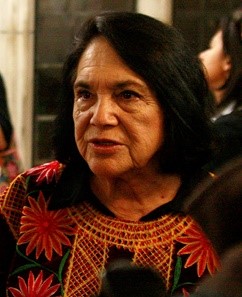
The Bracero Program was series of agreements between the U.S. and Mexico that promised decent living conditions to Mexicans who came to the U.S. to fulfill a labor shortage in agriculture, starting in the 1940s. It brought new Mexican Americans to the U.S., and they added their voices to this evolving story. The National Museum of American History’s wonderful exhibition, Bittersweet Harvest: The Bracero Program 1942-1964, captured many bracero voices and experiences, documenting each stage of bracero life from the journey and the border to brutal conditions, labor activism, and multi-generational family legacies. One quote, from former bracero Guadalupe Mena Arizmendi, sums up both the program’s realities and its possibilities: “Es puro sufrimiento, le digo, allí sí se sufre y allí andamos, eso queríamos (I tell you, it is pure suffering, there you suffer and there we were, that is what we wanted).” Mexican-American author Tomás Rivera, himself the son of braceros, portrays the community’s experiences and legacies with grit and power in his novel And the Earth Did Not Devour Him (1971).
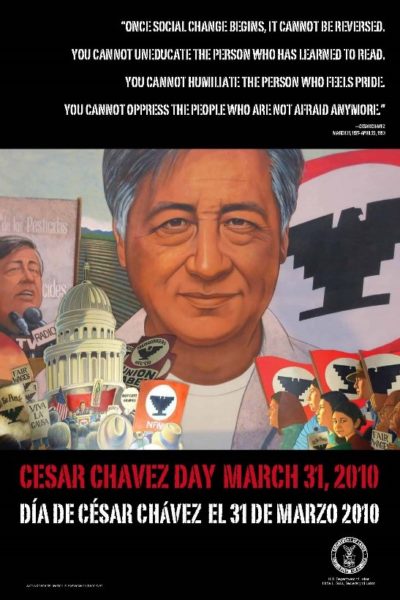
Out of the Bracero Program and era came as well the first moves toward national activism on behalf of migrant laborers. Dolores Huerta, the daughter of a migrant laborer father and a mother who ran a hotel and restaurant for migrant workers, founded the Agricultural Workers Association in 1960 when she was just 30 years old; two years later she joined forces with César Chávez, the son of two migrant laborers and then the Executive Director of the activist Community Service Organization, to co-found the National Farm Workers Association (NFWA). A few years later, the NFWA joined striking Filipino-American laborers from the Agricultural Workers Organizing Community (AWOC) in the 1965 Delano (CA) grape strike, a hugely influential effort that would last nearly five years, lead to the founding of the United Farm Workers (UFW) when the two groups merged, and fundamentally reshape late 20th century American labor and politics.
Operation Wetback’s Legacy
These decades continued to witness anti-Mexican-American discrimination and exclusionary policies, most notably the mid-1950s federal deportation program known as Operation Wetback. Historian Mae Ngai’s award-winning Impossible Subjects: Illegal Aliens and the Making of Modern America (2004) features the stories of many of those affected by Operation Wetback. She highlights, for example, a July 1955 incident in which “some 88 braceros died of sunstroke as a result of a roundup that had taken place in 112-degree heat, and … more would have died had Red Cross not intervened.” Elsewhere she quotes a congressional investigation that referred to a ship transporting deportees to Mexico as the equivalent of “an eighteenth century slave ship” and a “penal hell ship.” LULAC’s newsletter depicted deportees arriving in Mexico as “broken men, with strength spent and exhausted by the senseless struggles of a life revolving around slavish, ill-paid labor, and the degradation of jail and prison cells.”
The Accomplishments of the National Council of La Raza
These evolving exclusionary policies required new activist organizations, and the 1960s saw the creation of a vital one: the National Council of La Raza. La Raza was also the name of a community newspaper edited by Eliezer Joaquin Risco Lozada, a prominent young activist in Fresno who would go on to open rural health clinics throughout the region, create the first La Raza Studies (later Chicano Studies) program at Fresno State University, and advocate for Latino-American rights throughout his inspiring life. In March 1968, inspired by Lozada and other activists, Southern California high school students led the East Los Angeles Walkouts, a stunning and successful mass action that garnered national attention and made clear that Mexican- and Latin-American communities were fully part of the era’s burgeoning civil rights movements.
Writers Chronicle Mexican-American Life
The late 20th and early 21st centuries saw the emergence of a number of Mexican-American creative writers who brought these histories, stories, and communities into their ground-breaking literary works. Novelist Rolando Hinojasa has created, across the 15 volumes to date in the Klail City Death Trip Series, a fictional border county and community modeled on the South Texas Rio Grande Valley in which he grew up. Scholar and activist Gloria Anzaldúa likewise grew up in the Rio Grande Valley, and turned that border setting into the basis for her multi-lingual multi-genre masterpiece Borderlands/La Frontera: The New Mestiza (1987) among many other works. And Professor Norma Cantú, the foremost translator of and scholar on Anzaldúa’s works, has published her own memoirs as both a Mexican-American immigrant and a 21st century contributor to the continuing story of Mexican-American identity and community.

As part of his trip to the Rio Grande Valley and the border last week, President Trump visited Anzalduas Park, a county park along the river. Perhaps this historical moment can produce more than further border and immigration debates—perhaps it can lead us to more collective engagement with the story of Gloria Anzaldúa and other Mexican-American figures and communities. Their voices deserve a far more central role in our collective memories, our present conversations, and our shared future.
Note: This piece benefited greatly from the suggestions of Professors Laura Belmonte and John Buaas.